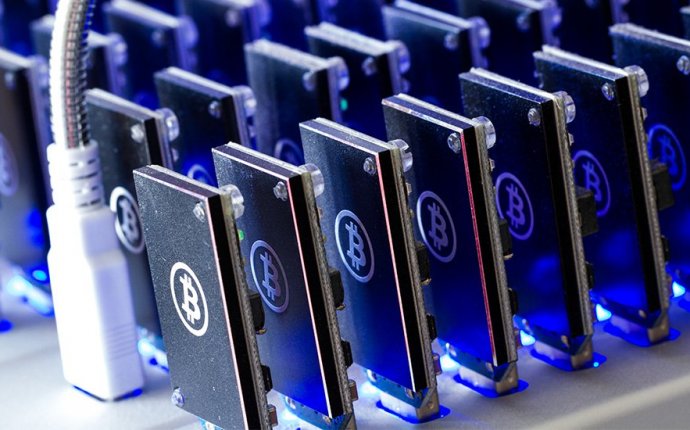
How to use Bitcoin miners?
 For a hobbyist bitcoin miner, the industry is a different place than it was a few years ago.
For a hobbyist bitcoin miner, the industry is a different place than it was a few years ago.
It used to be that you could use your CPU or GPU to mine bitcoin. But then the price of bitcoin started rising and people began to realize how much money could be earned, and – with the resulting rise in mining difficulty – only those that could afford costly ASICs were in a position to actually make any profit. Soon enough, only the largest operations could compete.
Another change has been geographic. It used to be that miners were distributed all across the globe, but many of the largest operations have centralized in parts of the world with at least one of the two following variables: cheap/free electricity or a cold environment.
A significant portion of the electricity cost associated with mining has to do with keeping the mining chips cool. For any computer user, we know this as the loud fan working to keep our CPU cool. If the miners are kept cool due to the environment or electricity costs are not a concern, cooling costs become an afterthought.
But what if someone still wanted to mine without those benefits?
Presently, the only company releasing new products targeting the average miner is the Shanghai-based Bitmain. It believes that its recently launched Antminer R4 is the easiest way for the hobbyist miner to generate some cryptocurrency. But do the numbers actually work?
Before the R4 sold out, it would have cost a home miner $1, 635 (plus a hefty whack in shipping) to obtain the miner and a power supply unit. With the price of a bitcoin at $594, a pool fee of 1%, and 12 cents per kWh, it would take approximately 537 days to break even on investment.
And that 537 days is contingent on mining difficulty not increasing, so it’s possible that ROI could take far longer, especially if more people take up mining.
Nishant Sharma, international marketing manager at Bitmain, explained that the increased cost per gigahash is due to the custom hardware-design associated with keeping the noise down on the R4. And at 52 decibels – as loud as a conversation at home – it is much quieter than the average bitcoin miner.
“With bitcoin’s current difficulty level, it is extremely challenging to make a low-power or low-cost miner that can breakeven, ” Sharma said.
Mining for heat
Unfortunately, that doesn’t actually help the average miner hoping to generate profit – or at least break even as a hobbyist looking to help support the network. But as basically every character in the Game of Thrones would say: Winter is coming.
So to keep warm this winter, why not take what many miners around the world try to get rid of as an unwanted waste product – heat – and use it for something good?
While this isn’t a new idea, per say, there was always a trade off between the loud noise the miner emitted and the heat it produced. Sharma explained that the R4 can act as a fan heater because of its unusual noise level.
The unit of measure for a space heater is the British thermal unit (BTU). For every one watt of electricity that goes into a heater, 3.413 BTUs are released.
The average 900-watt heating fan can be purchased for approximately $50. And at 900W, it’s going to produce 3, 071 BTUs, which will help heat about 90 square feet. To power that heater, an individual would be looking at a cost of around $2.59 a day. Let's assume this runs for four months out of the year and electric costs are a little over $310.
All you got for that total investment of $360 is heat.
The R4, which is billed at 845W + 9% at the wall, would require about the same amount in electricity cost every day. The difference is that the owner would earn about $3.04 per day in bitcoin or $394 over the same four-month period.
Is it economical? It would still take a little over 408 days to actually break even on the hardware and that’s if you were running the miner all year. But for those that wanted to give mining a try anyway, it would be somewhat of a cost saver.
In hot water
Another option would be to use the heat from the miner to actually heat up water for use in a shower or to wash your hands.
A 50-gallon, 5, 500W electric water heater that runs for three hours every day would cost $722.78 per year in electricity to run, plus the initial cost of approximately $500.
Because the bitcoin miner is kicking off heat, some companies have had the idea of pushing water through mining chips.
One company trying the approach is BitHeat. The firm believed that it could create a bitcoin miner for anywhere between $1, 200-$2, 2, 00 that would produce enough heat every day to heat a 40-gallon tank.
“For chips with efficiencies around .16 J/GH a $1200 price point would ROI in about 20 months, and have a 50% ROI in 40 months. But with BitFury's 16nm chip (.06 J/GH) it would ROI in about 6 months at a $1200 price point, and about 18 months at a $3000 price point, and a 50% ROI in 35 months.”
With a life expectancy of 12-years for the average electric water heater, a breakeven of only 18 months would create an additional 10.5 years for someone to heat their water and mine bitcoin on a daily basis.
Spreading Cost
Ultimately, making the decision to mine for heat is simple: you’d be using the electricity anyway. Because the input for a bitcoin miner is electricity, but there is the output of both heat and bitcoin, the possibility of subsidizing the cost of heat is alluring.
The primary problem is the cost of hardware. The BitHeat team said its miners could break even after only a year and a half, but that is when providing hot water – which people need year round.









